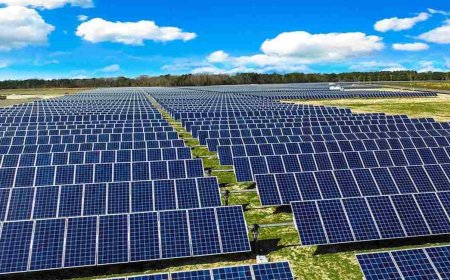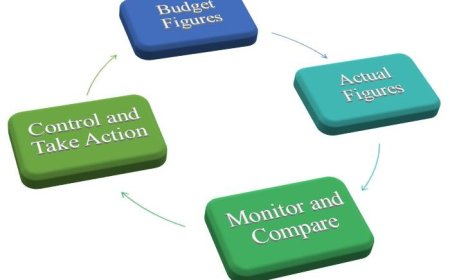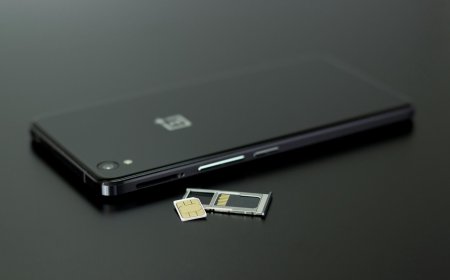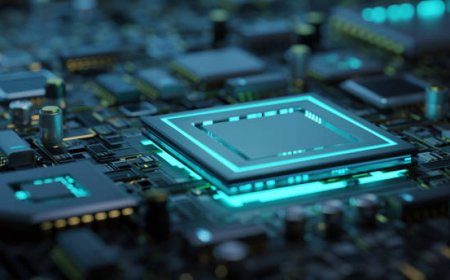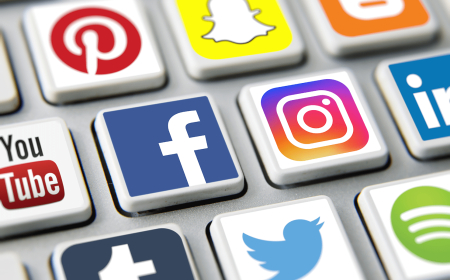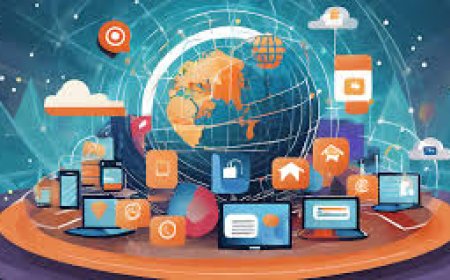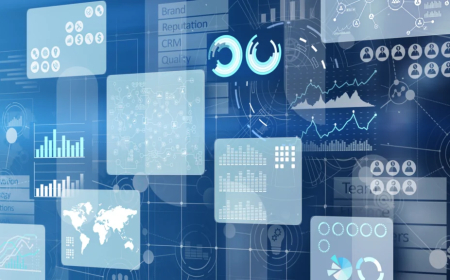5G Technology: Transforming Connectivity and Innovation
Discover how 5G technology is revolutionizing connectivity and driving innovation across industries. Explore its impact on smart cities, IoT, and new technological advancements.
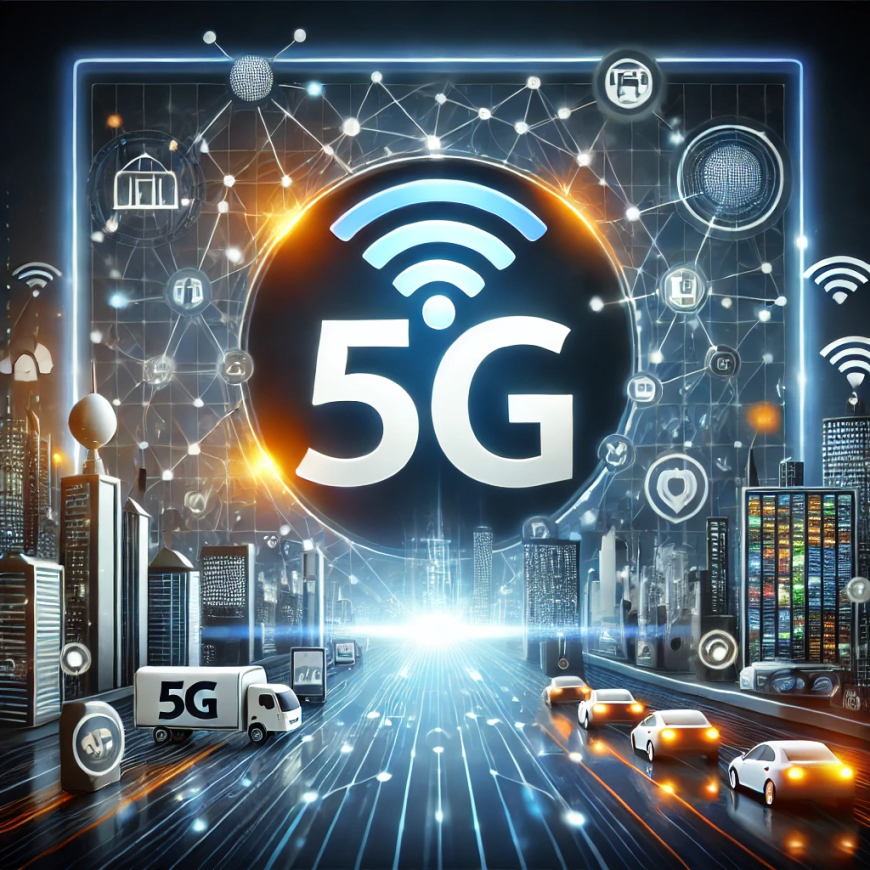
Introduction
The advent of fifth-generation (5G) technology marks a significant milestone in the evolution of telecommunications. As the successor to 4G, 5G is set to revolutionize the way we connect, communicate, and interact with technology. Promising faster data speeds, lower latency, and greater connectivity, 5G technology is poised to transform industries, driving innovations that were previously deemed impossible. This comprehensive essay explores the fundamental principles of 5G technology, its expected impact on various sectors, challenges it faces during implementation, and its potential to reshape the future of connectivity and innovation.
At its core, 5G technology operates on a framework that integrates advanced radio frequencies and sophisticated network architectures. Utilizing higher frequency bands, known as millimeter waves, 5G can deliver data at speeds exceeding 10 gigabits per second, a tenfold increase over its predecessor. This leap in performance not only enhances mobile broadband experiences but also facilitates the proliferation of the Internet of Things (IoT), connecting billions of devices seamlessly.
The anticipated impact of 5G extends far beyond telecommunications, reaching into sectors such as healthcare, transportation, and entertainment. In healthcare, for instance, 5G enables real-time telemedicine and remote surgeries, where surgeons can operate robotic instruments from miles away with minimal latency. In transportation, smart cities can benefit from connected vehicles that communicate with traffic systems, reducing congestion and enhancing safety. Furthermore, the entertainment industry stands to gain through immersive experiences such as augmented reality (AR) and virtual reality (VR), which require high-speed, low-latency connections to deliver content in real-time.
Despite its promising potential, the implementation of 5G technology is not without challenges. Infrastructure development poses a significant hurdle, as the deployment of thousands of small cell towers is necessary to support the extensive coverage required for 5G networks. Additionally, concerns regarding cybersecurity and data privacy must be addressed, as increased connectivity opens new avenues for potential threats. Regulatory frameworks will also need to evolve to accommodate the rapid pace of technological advancement while ensuring equitable access to 5G services.
The transformative potential of 5G technology is immense, heralding a new era of connectivity and innovation. As industries adapt to this technological shift, the possibilities for enhanced communication, improved efficiency, and groundbreaking applications are limitless. Embracing the challenges and opportunities presented by 5G will be crucial in shaping a future where connectivity knows no bounds.
Understanding 5G Technology
1. Key Features of 5G
5G technology is distinguished by several key features that enhance its capacity and capabilities compared to previous generations:
Increased Data Speeds: 5G networks can provide data transfer speeds of up to 10 Gbps, significantly faster than 4G networks, which typically offer speeds around 100 Mbps. This increased speed enables instantaneous downloads and high-definition streaming, transforming the way users experience content and interact with digital services. Imagine downloading an entire season of your favorite show in mere seconds, or engaging in immersive virtual reality experiences without the frustrating lag.
Lower Latency: Latency, the time it takes for data to travel from the source to the destination, is a critical factor in many applications. 5G aims to achieve ultra-low latency of around 1 millisecond, enabling real-time communication and responsiveness crucial for applications such as autonomous vehicles and remote surgeries. This near-instantaneous response time not only enhances user experiences in gaming and virtual reality but also paves the way for innovations in telemedicine, where every millisecond can be a matter of life and death.
Enhanced Connectivity: The design of 5G networks accommodates a vast number of connected devices per square kilometer, estimated to be around one million devices. This capability supports the burgeoning Internet of Things (IoT) ecosystem, where a multitude of devices and sensors require seamless communication. From smart cities to connected homes, 5G will empower a new era of interconnectedness, enabling everything from smart traffic management systems to energy-efficient buildings.
Improved Network Efficiency: 5G utilizes advanced technologies such as beamforming, massive MIMO (Multiple Input Multiple Output), and network slicing to optimize network performance and manage traffic more effectively. These innovations allow for a more efficient allocation of resources, ensuring that users experience consistent performance even in high-demand scenarios, such as crowded public events or urban centers.
2. The Technology Infrastructure
5G technology operates on different frequency bands, categorized into three types: low-band, mid-band, and high-band (or millimeter-wave).
Low-Band: This band offers extensive coverage but lower speeds, making it suitable for rural areas where connectivity is often limited.
Mid-Band: Striking a balance between speed and coverage, mid-band is particularly effective in urban environments, providing reliable service to densely populated areas.
High-Band: While high-band offers the fastest speeds, it has a limited range and requires more infrastructure, necessitating a dense network of small cells and antennas. This infrastructure is essential to leverage the full potential of 5G, particularly in urban settings where user density demands robust connectivity.
The transformative potential of 5G technology lies not only in its speed and efficiency but also in its ability to connect billions of devices, ultimately reshaping industries and enhancing everyday life. As we stand on the brink of this technological revolution, the possibilities seem boundless.
Impact of 5G on Various Sectors
-
Healthcare 5G technology has transformative implications for healthcare delivery and medical practices. With its low latency and high-speed capabilities, telemedicine can flourish, allowing healthcare professionals to conduct remote consultations with greater efficiency. Moreover, 5G can support remote surgeries, where surgeons can operate on patients in real time using robotic technology, ensuring both precision and safety. In addition, real-time monitoring of patients through wearables can facilitate prompt interventions and personalized treatment plans. This capability not only enhances patient outcomes but also reduces the burden on healthcare facilities, allowing them to allocate resources more effectively. Furthermore, the integration of 5G with artificial intelligence can lead to improved diagnostics and treatment recommendations, revolutionizing the way healthcare is delivered.
-
Transportation The transportation sector stands to gain immensely from 5G technology. The development of autonomous vehicles relies on real-time data exchange between vehicles, infrastructure, and centralized systems. 5G’s low latency allows for secure and instantaneous communication, minimizing accidents and improving traffic flow. Enhanced connectivity can optimize logistics and supply chains through better tracking and route planning, ultimately leading to cost savings and increased efficiency. Additionally, smart traffic management systems powered by 5G can analyze real-time data to adjust traffic signals dynamically, reducing congestion and emissions, and making urban mobility more sustainable.
-
Manufacturing and Industry 4.0 5G supports the transition to Industry 4.0, characterized by the integration of IoT, artificial intelligence, and automation. In manufacturing, 5G enables real-time monitoring of machines and systems, predictive maintenance through analytics, and the assembly of smart factories where devices communicate seamlessly. This interconnectedness enhances operational efficiency, reduces downtime, and fosters innovation in production processes. Moreover, the ability to collect and analyze vast amounts of data in real time leads to informed decision-making and the development of more agile manufacturing practices, which can respond swiftly to market demands.
-
Smart Cities 5G technology is a cornerstone of smart city initiatives, where interconnected infrastructure improves urban management and enhances residents’ quality of life. With 5G, cities can deploy smart lighting, waste management systems, and traffic management solutions that adapt to real-time conditions, leading to energy conservation and reduced congestion. Moreover, 5G facilitates public safety through enhanced surveillance systems and emergency response coordination, ensuring that cities can respond more effectively to crises. The integration of 5G with urban planning and development initiatives also paves the way for sustainable growth, fostering environments that are not only technologically advanced but also conducive to the well-being of their inhabitants.
The impact of 5G technology spans across various sectors, driving innovation, efficiency, and improved quality of life in an increasingly interconnected world.
Challenges in Implementing 5G Technology
Despite its immense potential, the deployment of 5G technology encounters several challenges that stakeholders must navigate:
-
Infrastructure Costs Establishing a robust 5G infrastructure requires considerable investments in new equipment, antennas, and fiber optic cables. Service providers and government entities must collaborate to allocate funds and develop cost-effective strategies for deploying the necessary infrastructure. This financial burden is compounded by the need for ongoing maintenance and upgrades, which can strain budgets and resources. Innovative financing models, such as public-private partnerships, could help alleviate some of these costs while fostering a shared commitment to advancing 5G capabilities.
-
Coverage and Accessibility Achieving comprehensive 5G coverage, particularly in rural and underserved areas, poses a significant challenge. While urban areas may enjoy rapid 5G development, ensuring equitable access for all regions is critical to avoid exacerbating the digital divide. Stakeholders must prioritize initiatives that extend network reach, such as deploying small cells and leveraging existing infrastructure. Additionally, community engagement is vital; understanding local needs and conditions can lead to tailored solutions that enhance connectivity and foster digital inclusion.
-
Regulatory and Standardization Issues The rapid advancement of 5G technology raises questions regarding regulation and standardization. Policymakers and regulatory bodies must adapt their frameworks to accommodate new technologies while ensuring consumer protection and network security. This requires proactive dialogue among industry leaders, regulators, and technologists to establish clear guidelines that promote innovation without compromising safety. International cooperation will also be essential, as harmonizing standards across borders can facilitate seamless global connectivity.
-
Cybersecurity Concerns The increased number of connected devices and higher data exchange inherent in 5G come with heightened cybersecurity risks. As networks become more sophisticated, addressing vulnerabilities and safeguarding against cyber threats is paramount for maintaining user trust. Stakeholders must invest in advanced security protocols and threat detection systems to mitigate risks. Furthermore, fostering a culture of cybersecurity awareness among consumers and businesses will be crucial in building resilience against potential attacks.
-
Public Perception and Education The successful implementation of 5G technology also hinges on public perception and understanding. Misconceptions surrounding health risks and privacy concerns can hinder acceptance and adoption. Comprehensive educational campaigns are essential to inform the public about the benefits of 5G, such as enhanced connectivity, improved services, and economic opportunities. By fostering transparency and dialogue, stakeholders can build trust and encourage broader acceptance of this transformative technology.
Navigating these multifaceted challenges will require collaboration, innovation, and a commitment to equitable solutions, ensuring that the promise of 5G technology is realized for all.
The Future of 5G Technology
The ongoing development of 5G technology presents several opportunities for future advancements and applications:
-
Enhanced IoT Ecosystems As connectivity expands, the Internet of Things (IoT) landscape will flourish, enabling devices to communicate more effectively. With 5G, smart agriculture will leverage real-time data from sensors monitoring soil conditions, weather patterns, and crop health, facilitating precision farming techniques that optimize yield while minimizing resource use. Environmental monitoring will also see significant enhancements, with interconnected sensors providing continuous data streams to detect pollution levels and climate changes, empowering communities to respond proactively. Connected appliances will transform everyday living, allowing for seamless integration of home systems that optimize energy consumption and enhance user convenience.
-
Evolution of Connectivity The potential for 5G extends beyond mobile phones and traditional devices; it may transform connectivity in various sectors, including agriculture, energy management, and infrastructure. For instance, in agriculture, autonomous drones equipped with 5G technology can monitor vast fields, delivering insights on crop health and irrigation needs, thereby reducing waste and increasing productivity. In energy management, smart grids powered by 5G will facilitate real-time communication between energy producers and consumers, optimizing energy distribution and enhancing the reliability of renewable energy sources.
-
Edge Computing Integration Combining 5G with edge computing technologies can enhance data processing capabilities by enabling data to be processed closer to its source. This integration improves response times, optimizes bandwidth usage, and supports real-time applications such as autonomous vehicles, which require instantaneous data analysis for safe navigation. In healthcare, edge computing can facilitate remote patient monitoring, allowing for timely interventions based on real-time health data, ultimately improving patient outcomes and reducing hospital visits.
-
Advancements in Artificial Intelligence The synergy between 5G and artificial intelligence (AI) will enable more sophisticated analytics, allowing organizations to make data-driven decisions rapidly. AI algorithms, facilitated by enhanced connectivity, will revolutionize numerous industries, driving further innovations in automation. For example, in manufacturing, AI-powered robots will communicate seamlessly across production lines, optimizing workflows and minimizing downtime. In finance, real-time data analysis will empower institutions to detect fraud more effectively and offer personalized services to clients.
The transformative potential of 5G technology is vast, promising to reshape industries and enhance everyday life. As we embrace this new era of connectivity, the collaborative interplay between 5G, IoT, edge computing, and AI will undoubtedly drive significant advancements, fostering a more efficient and interconnected world.
Conclusion
5G technology represents a paradigm shift in connectivity and serves as a catalyst for innovation across industries. By providing faster speeds, lower latency, and improved network efficiency, 5G has the potential to transform healthcare, transportation, manufacturing, entertainment, and urban infrastructure. The implications of this technological leap are profound, as it not only enhances current operations but also opens the door to entirely new business models and services.
In healthcare, for instance, the integration of 5G will enable real-time remote monitoring of patients, facilitating telemedicine solutions that can drastically improve patient outcomes. Surgeons can perform complex procedures using robotic systems that rely on ultra-reliable low-latency communication, ensuring precision and safety. This evolution will not only enhance the quality of care but also expand access to healthcare services, particularly in underserved areas.
Transportation is another sector poised for disruption. The advent of autonomous vehicles, powered by 5G, promises to revolutionize how we commute. With vehicles communicating with each other and with infrastructure in real-time, traffic congestion can be significantly reduced, accidents minimized, and public transportation made more efficient. Smart city initiatives will leverage 5G to streamline urban mobility, enhance public safety, and optimize energy consumption.
In manufacturing, the concept of Industry 4.0 will be fully realized through the implementation of 5G. Factories will become interconnected ecosystems where machines, sensors, and human operators collaborate seamlessly. This not only boosts productivity but also allows for predictive maintenance, reducing downtime and operational costs. The agility afforded by 5G will enable manufacturers to respond swiftly to market changes, fostering innovation and competitiveness.
Entertainment, too, stands to benefit immensely from 5G. With the ability to stream high-definition content seamlessly and support immersive experiences like virtual and augmented reality, consumers will enjoy a richer, more engaging media landscape. This shift will redefine how content is created, distributed, and consumed, paving the way for new forms of storytelling and interaction.
However, as we embrace the capabilities of 5G, it is essential to address the challenges that accompany this transition. Infrastructure costs, coverage disparities, and cybersecurity risks must be managed proactively to ensure equitable access and secure networks.
The future of 5G promises a landscape characterized by greater connectivity and opportunity. As organizations and societies harness its potential, they will unlock transformative solutions that enhance quality of life, redefine industries, and pave the way for a more connected and innovative world. The journey toward this future requires collaboration, foresight, and commitment to overcoming the hurdles that lie ahead, but the rewards are poised to be monumental.
What's Your Reaction?
 Like
0
Like
0
 Dislike
0
Dislike
0
 Love
0
Love
0
 Funny
0
Funny
0
 Angry
0
Angry
0
 Sad
0
Sad
0
 Wow
0
Wow
0







